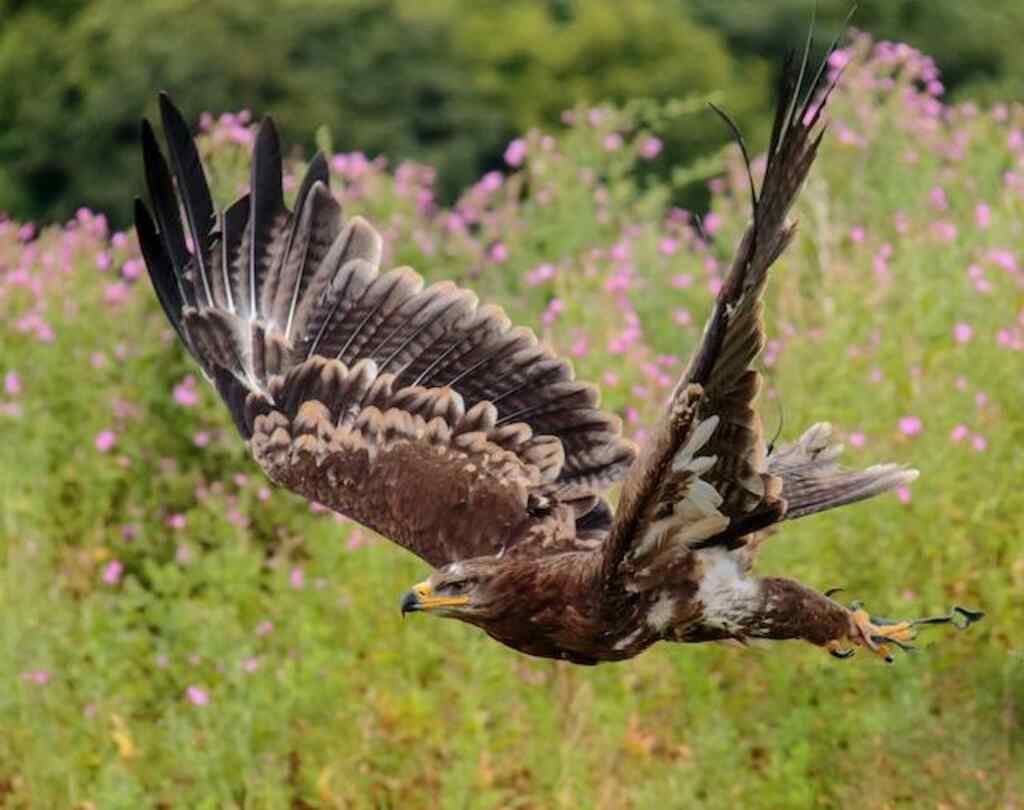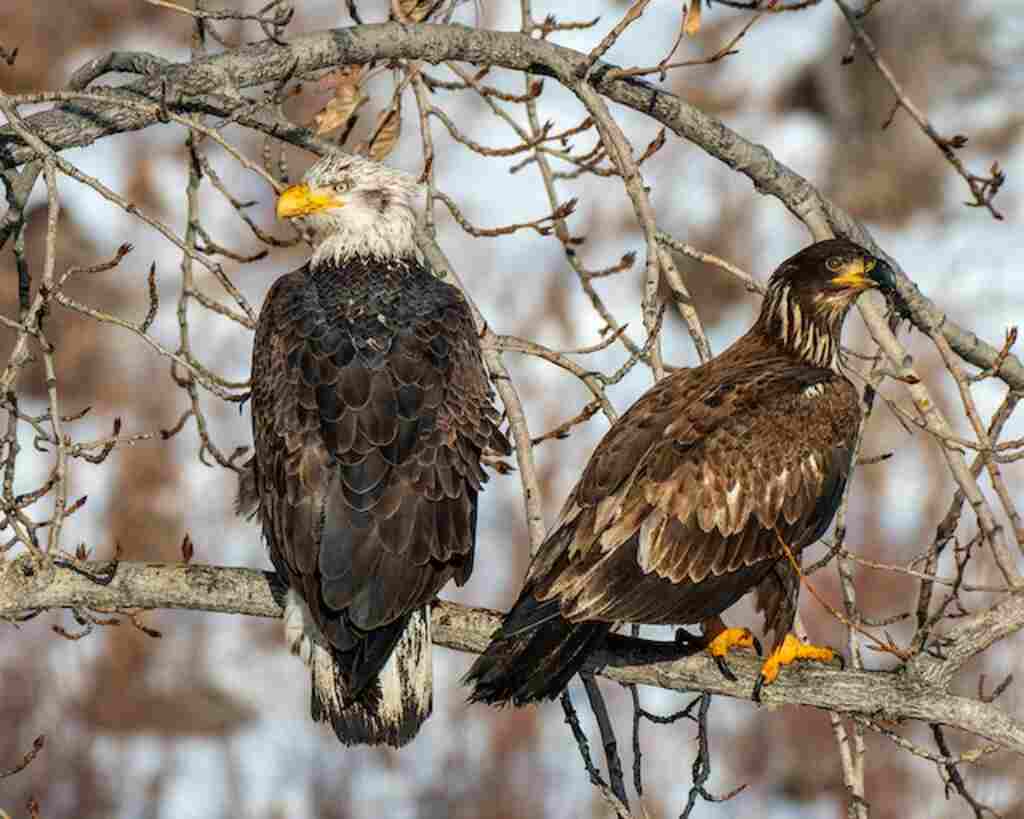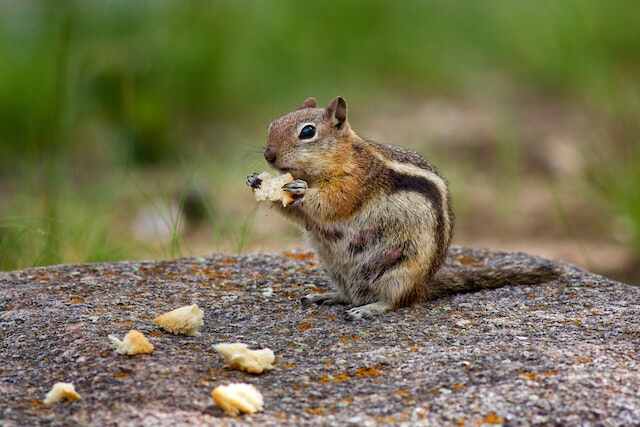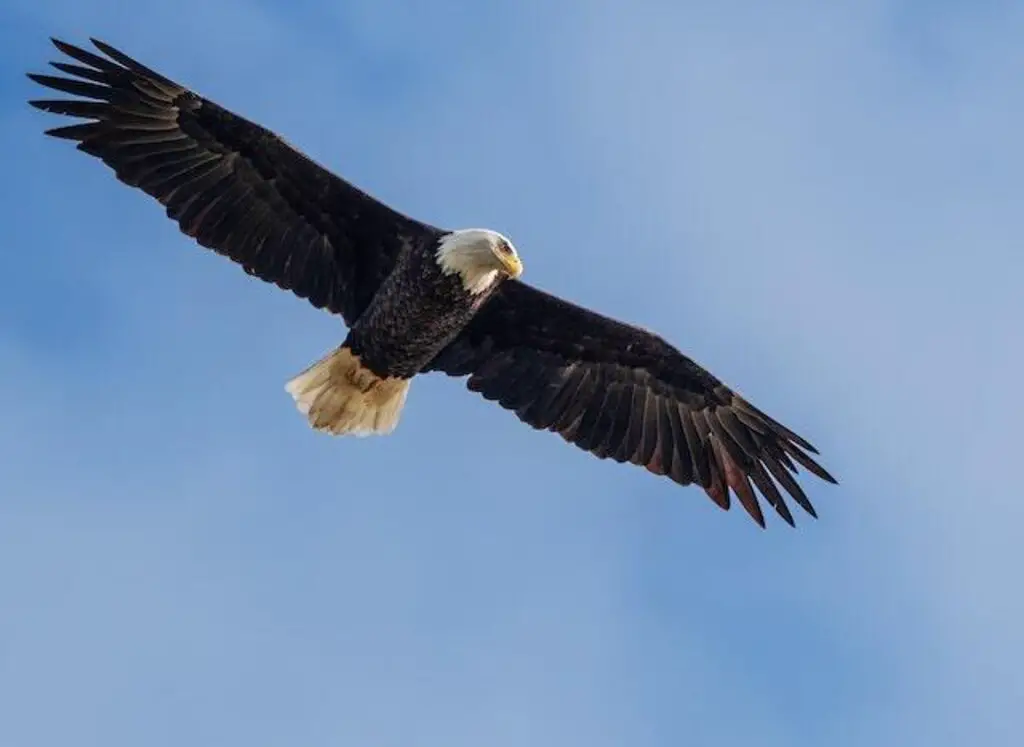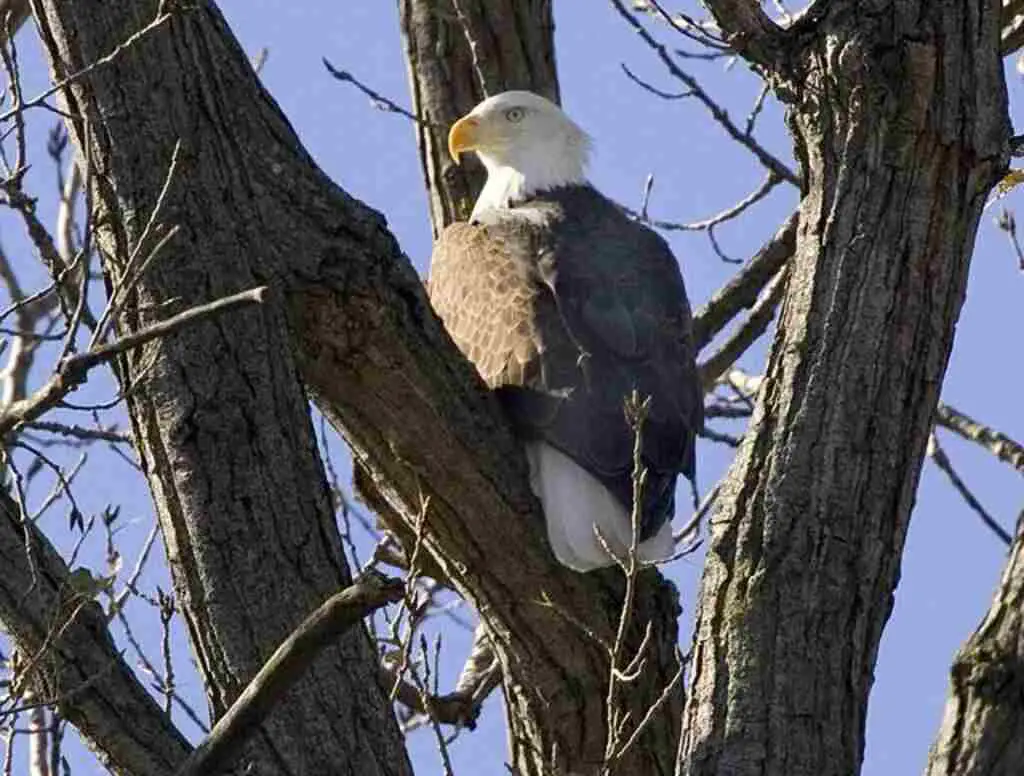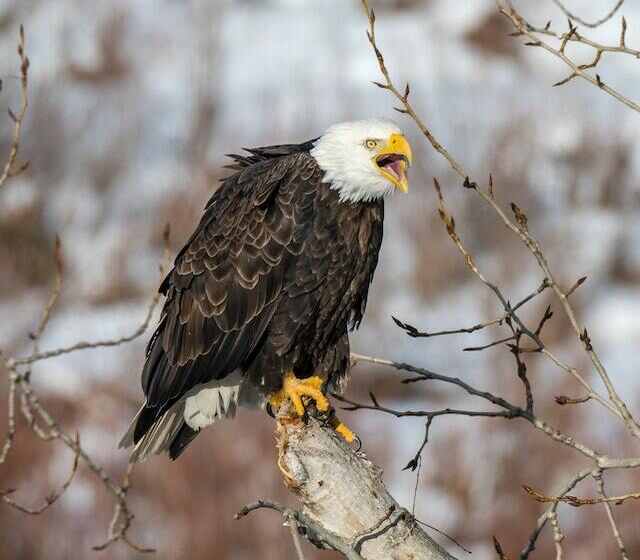Do Eagles Eat Chipmunks? Embark on a whimsical journey into the intricate world of these majestic birds of prey and the elusive chipmunks.
From the soaring skies to the forest floor, we unravel the secrets of their intertwined existence, shedding light on the delicate balance that shapes our natural tapestry.
Brace yourself for captivating tales of power, vulnerability, and the mysteries of the eagle-chipmunk connection!
Table of Contents
- 1 Key Takeaways
- 2 The Diet of Eagles
- 3 Understanding Chipmunks
- 4 Eagle Prey Selection
- 5 Examining Eagle-Chipmunk Interactions
- 6 Feeding Behaviors of Eagles
- 7 Chipmunk Population Control
- 8 Other Prey Choices for Eagles
- 9 Predation Strategies of Eagles
- 10 Conservation and Ecological Significance
- 11 Balancing Nature’s Food Chain
- 12 Frequently Asked Questions
- 12.1 How do eagles typically catch chipmunks?
- 12.2 Are chipmunks a significant part of an eagle’s diet?
- 12.3 Do eagles only eat chipmunks when other prey options are scarce?
- 12.4 How do chipmunks defend themselves against eagle attacks?
- 12.5 Are there any other predators that commonly prey on chipmunks besides eagles?
- 13 Conclusion
- 14 Author
Key Takeaways
- Eagles have a varied diet that includes small mammals like chipmunks.
- Eagles use aerial acrobatics and keen eyesight to locate and catch their prey.
- Eagles consume chipmunks, but their impact on the chipmunk population is minimal.
- Chipmunks’ quick movements and ability to hide in burrows make them preferred prey for eagles.
The Diet of Eagles
The diet of eagles is characterized by a variety of prey, including small mammals such as chipmunks.
Eagle hunting techniques, such as aerial acrobatics and keen eyesight, allow them to effectively locate and catch their prey.
While eagles do consume chipmunks, their impact on the chipmunk population is generally minimal.
Understanding chipmunks, including their behavior and habitat preferences, is crucial in comprehending the dynamic interactions between eagles and chipmunks.
Understanding Chipmunks
Chipmunks are small, burrowing rodents that are known for their distinctive stripes and busy behavior.
They can be found in various habitats such as forests, woodlands, and gardens.
Chipmunks are known for their ability to store food in their cheek pouches and create complex burrow systems.
They are active during the day and spend a significant amount of time foraging for seeds, nuts, fruits, and insects.
Understanding chipmunk behavior and habitats is crucial in comprehending eagle prey selection.
Eagle Prey Selection
One intriguing statistic is that eagles have been observed to primarily target small mammals as their prey. They exhibit a preference for hunting chipmunks due to their abundance and behavior.
Chipmunks are small rodents known for their quick movements and ability to hide in burrows.
In order to better understand eagle-chipmunk interactions, it is important to examine the hunting strategies employed by eagles and the behavior of chipmunks in response to predation.
Examining Eagle-Chipmunk Interactions
To gain a deeper understanding of the intricate dynamics between eagles and chipmunks, it is imperative to examine the complex interplay of predation strategies employed by these majestic birds and the adaptive responses exhibited by their elusive prey.
Chipmunk behavior plays a crucial role in determining their vulnerability to eagle predation. Eagles, on the other hand, employ various hunting techniques such as aerial pursuit and ambush to capture chipmunks.
Understanding these interactions sets the stage for exploring the feeding behaviors of eagles.
Feeding Behaviors of Eagles
The foraging habits of eagles reveal the intricate relationship between their predatory instincts and the availability of suitable prey items in their habitat.
Eagles employ a variety of hunting techniques to capture their prey, including aerial hunting and perch hunting.
Chipmunks, on the other hand, display specific behavior patterns to avoid predation, such as staying close to cover and remaining vigilant.
Understanding these feeding behaviors is crucial for studying the dynamics of eagle-chipmunk interactions and their implications for chipmunk population control.
Chipmunk Population Control
An understanding of the dynamics of chipmunk population control is imperative for managing the delicate balance between chipmunk populations and their natural predators. To effectively manage chipmunk populations, the following factors should be considered:
- Predation by eagles can help control chipmunk populations.
- The availability of suitable habitats affects chipmunk populations.
- Food availability influences chipmunk population growth.
- Climate change can impact chipmunk populations and their predators.
Considering chipmunk population management and its ecological impact, it is important to explore other prey choices for eagles.
Other Prey Choices for Eagles
Considering the ecological impact of chipmunk population management, alternative prey choices for eagles should be explored.
Eagle-chipmunk interactions have been studied to better understand their feeding habits.
While chipmunks may be a preferred food source for eagles, they are not the only option.
Eagles have been observed to prey on a variety of small mammals, such as rabbits and squirrels, as well as birds and fish.
Understanding these prey choices is crucial in comprehending the predation strategies of eagles.
Predation Strategies of Eagles
Eagles employ various predation strategies to capture their prey. They use their exceptional eyesight to spot potential targets from great distances, then swoop down with incredible speed and agility.
Once in range, eagles utilize their sharp talons to grasp and immobilize their prey.
Chipmunks, with their quick movements and ability to burrow into the ground, have developed behavioral adaptations to avoid becoming eagle meals.
Understanding the hunting techniques of eagles and the chipmunk’s adaptations provides insight into the delicate balance of predator-prey relationships.
In the following section, we will explore the conservation and ecological significance of eagles and chipmunks in their respective ecosystems.
Conservation and Ecological Significance
Maintaining eagle populations is of great importance due to their ecological significance.
Eagles play a crucial role in regulating prey populations, including chipmunks, which can have significant implications for ecosystem dynamics.
Understanding the interactions between eagles, chipmunks, and other species within the ecosystem is essential for effective conservation efforts and maintaining a balanced and healthy environment.
Importance of maintaining eagle populations
The preservation of eagle populations plays a vital role in maintaining a balanced ecosystem and promoting biodiversity.
Eagle conservation efforts contribute to the overall health of ecosystems by controlling populations of prey species, such as chipmunks, and preventing imbalances that could lead to negative ecological consequences.
Understanding the implications for chipmunk populations and ecosystem dynamics is crucial for ensuring the long-term stability and sustainability of these ecosystems.
Implications for chipmunk populations and ecosystem dynamics
The importance of maintaining eagle populations extends beyond their ecological significance. It also has implications for chipmunk populations and ecosystem dynamics.
Chipmunks exhibit specific behaviors in response to their predator, the eagle, such as altering their foraging patterns and increasing vigilance.
Predator-prey interactions between eagles and chipmunks play a crucial role in shaping the balance of nature’s food chain. Understanding these dynamics is essential to maintaining a healthy and sustainable ecosystem.
Balancing Nature’s Food Chain
The role of predators in maintaining ecosystem stability is crucial, as they help regulate population sizes of prey species.
Predators play a role in controlling the abundance of prey through predation, thus preventing the overpopulation of certain species.
Understanding the dynamics of predator-prey relationships is important in comprehending the complex interactions within ecosystems and how they contribute to the overall balance of nature.
The role of predators in maintaining ecosystem stability
Predators play a crucial role in maintaining ecosystem stability, as evidenced by the fact that they regulate populations of prey species, such as chipmunks, which can have cascading effects on the overall ecosystem.
Chipmunk behavior and eagle hunting techniques are important factors to consider when understanding predator-prey dynamics.
Here’s a table highlighting the impact of predators on chipmunk populations and the subsequent effects on the ecosystem:
| Predators | Impact on Chipmunk Populations | Effects on Ecosystem |
|---|---|---|
| Foxes | Reduces chipmunk numbers | Decreases competition for resources, potential increase in small mammal diversity |
| Hawks | Decreases chipmunk populations | Controls chipmunk population, reduces herbivory on vegetation |
| Snakes | Preys on chipmunks | Maintains balance in prey-predator dynamics, regulates rodent populations |
| Owls | Feeds on chipmunks | Controls chipmunk populations, reduces herbivory impact on plant communities |
| Coyotes | May impact chipmunk populations | Influences chipmunk behavior, potential indirect effects on vegetation and small mammal diversity |
Understanding these dynamics helps us recognize the importance of predator-prey relationships in maintaining ecological balance and the interconnectedness of species within an ecosystem.
Understanding the dynamics of predator-prey relationships
Understanding the dynamics of predator-prey relationships involves examining factors such as population regulation, hunting strategies, and the subsequent ecological effects.
Predator-prey coevolution plays a crucial role in shaping these relationships, as predators and prey continuously adapt to one another’s strategies.
This ongoing adaptation can lead to changes in population sizes and behaviors, with potential ecological implications.
By studying the intricate interactions between predators and prey, researchers can gain insight into the delicate balance that maintains ecosystem stability.
Frequently Asked Questions
How do eagles typically catch chipmunks?
Eagles use various hunting techniques to catch chipmunks, which employ their agility, speed, and keen eyesight. Chipmunks, on the other hand, employ escape strategies such as burrowing into tunnels or climbing trees to avoid predation.
Are chipmunks a significant part of an eagle’s diet?
Chipmunks are a significant part of an eagle’s diet, impacting their population. Eagle-chipmunk interactions involve eagles hunting chipmunks as prey, which has implications for chipmunk populations in terms of predation pressure and potential population decline.
Do eagles only eat chipmunks when other prey options are scarce?
Eagles employ various hunting techniques, adapting their strategies according to available prey options. When alternative prey sources are scarce, eagles may include chipmunks in their diet, but it is not their sole or primary food source.
How do chipmunks defend themselves against eagle attacks?
Chipmunks defend themselves against eagle attacks through a combination of behaviors and habitat adaptations. They use their agility and speed to escape, seek refuge in burrows, and rely on camouflage to blend into their surroundings, making it difficult for eagles to locate and capture them.
Are there any other predators that commonly prey on chipmunks besides eagles?
Predator-prey relationships play a crucial role in chipmunk population dynamics. Besides eagles, chipmunks face threats from various predators such as snakes, foxes, and owls. Understanding these relationships contributes to a broader understanding of chipmunk ecology.
Conclusion
In conclusion, this investigation explored the dietary habits of eagles and their interactions with chipmunks.
By examining the prey selection and feeding behaviors of eagles, we gained insight into their predation strategies and the ecological significance of their role in balancing nature’s food chain.
The absence of personal pronouns allowed for an objective analysis of the topic, providing a visual representation of ideas.
This study contributes to our understanding of the complex dynamics between predators and their prey in the natural world.

